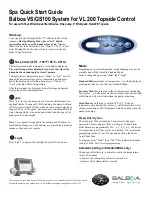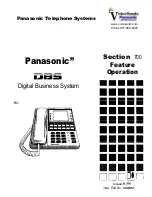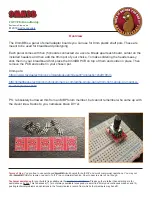
Page 2
1.0 Safety Information
Warning :
If this equipment is used in a manner not specified by the manufacturer, the protection provided may be
impaired. All installation and commissioning of this equipment must be carried out by electrically
competent persons.
1.1 Protection of permanently installed equipment :
This equipment is intended to be permanently installed equipment. Ensure wiring is suitable for the load current and the
insulation is suitable for the voltage, temperature and environment of the installation.
A supply disconnection device must be included in the installation, fitted as close as practical to and not be obstructed by the
equipment. It must be double pole and marked as the disconnection device. Each relay circuit must be protected by a fuse not
exceeding the maximum rated current for the relay as specified in the manual.
On wall mount unit disconnect supply before removing control unit from base. Control units must be correctly assembled to
achieve stated IP ratings.
1.2 Explanation of symbols :
The IEC symbols used on the equipment are as follows :
Refer to Manual.
The Protective earth terminal must be connected to an external Protective earthing system.
2.0 Application
The Electrosensor system is used for the detection of liquids or liquids with suspended / settled solids.
2.1 Technical Description
The control unit type MES*L is intended for mains powered operation in a control room non-hazardous area. The Mobrey
Electrosensor liquid level sensor in the hazardous area is connected directly to this control unit over a twisted pair cable or
similar. The connection provides nominal 12V dc power to the electrosensor head or adjacent amplifier, and the MES*L control
unit monitors the current drawn to identify the sensor state. This is either 8 or 16mA. See instruction manual IP264 for further
information. The output relay of the MES*L is set according to this sensor current and the setting of switch 1 (See Fig. 3).
Fault monitoring is achieved by checking the current drawn is within the band 4mA to 20mA. If a fault state exists
(current outside of band) then the fault relay de-energises.
For instructions specific to units used in hazardous area installations refer to leaflet IP242/SI
Beware
A thermal safety cut out in the transformer will fuse if 115V units are powered with 230V mains supplies.
3.0 Installation
The control units should be installed in an area suitable for their specifications. They are designed to be used indoors, but could
be installed outside using a suitable weatherproof enclosure. The front panel should be accessible to the operator.
The standard control unit MES*L is installed by undoing the two screws on the top and bottom of the unit, and
removing from the base. The base can now be mounted as required, making sure that the connection terminals are
on the left-hand side of the base.
The control unit has two relays, one for normal / alarm signaling and one for fault. They are both single pole change
over (SPCO). The internal switches (see Switch Setting Adjustment section) select the alarm relay normal condition
(energised or de-energised). If an alarm condition occurs the relay will change state. The fault relay is normally
energised and will release if an under or over current condition occurs. A 5 amp HBC fuse should be included in each
relay circuit.
3.1 Wiring
The system is designed to be noise immune; however, it is good practice to separate the instrumentation cables from
power cables. Figure 1 shows the terminal arrangements. If a single sensor is used its cable cores are connected to
the 1(-) and 2 (+) terminals on the control unit. If two sensors are used the high level one is connected to terminals 1
and 2 as above and the low level sensor is connected to terminals 3 (+) and 4 (-). The screen is earthed at the
Содержание Mobrey Electrosensor
Страница 6: ...Page 6 ...
Страница 7: ...Page 7 ...


























